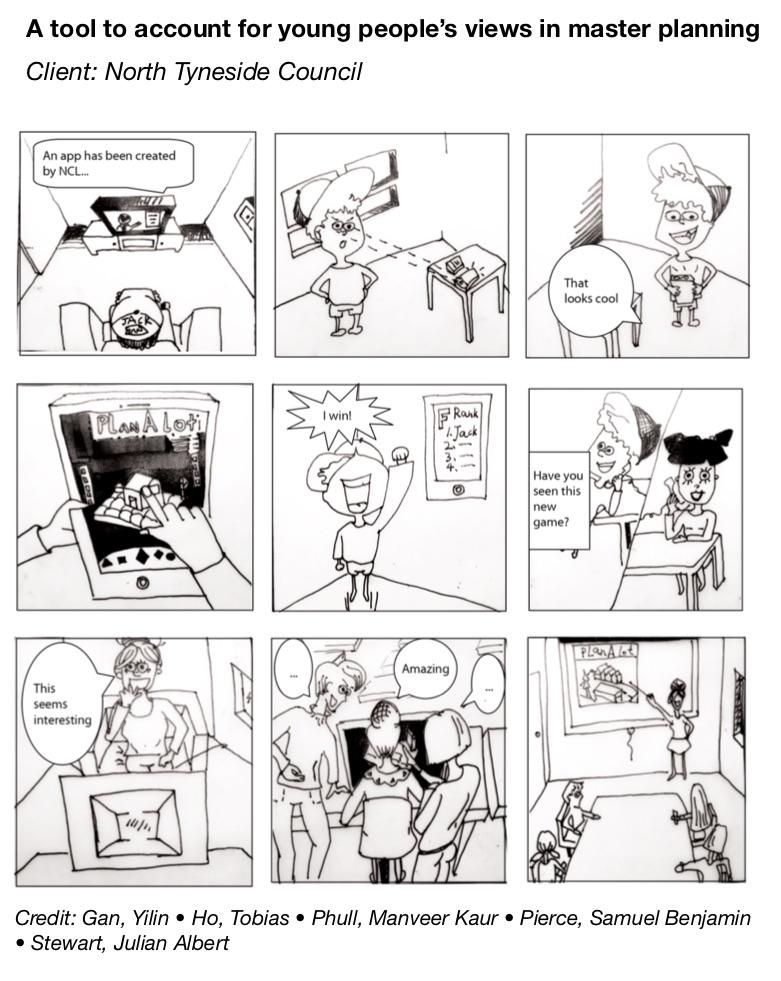So you have set yourself some goals for your project (e.g. reduced air pollution on Gosforth highstreet, more people take up volunteering in Walker, etc) and developed some questions you like your project to answer to (e.g. Can air quality data, displayed at street level, encourage behaviour change in pedestrians are car drivers?)… and you have begun to map out stakeholders, and key activities those are involved in as relevant to your challenge… So what’s next?
For our projects, we do assume that nobody knows everything, knowledge is distributed. Somebody knows more about the local area, somebody may know aspects of technological interventions that might work, etc, etc. As suggested in the lecture, we approach our designs with the idea that the participants listed in our briefs are experts in their own lifes, and that their views in relation to our projects are interesting and important (see Halskov et al., 2015).
So one way to approach this is to say, given our goal, how might our user informants (listed on our brief) help us collect the insight required to develop better idea of the priorities, needs, expectations that they may place towards our projects. At this point, we are not yet so focused on specific solutions or approaches, we still keep an open mind and let the users we involve speak.
Preparing your interviews
So with your goals in mind (e.g. reduced air pollution on Gosforth highstreet, more people take up volunteering in Walker, etc), prepare your interviews around the following points.
- What might the person tell you about?: Who is the person you are speaking to and which organisation they belong to? Note down a few points: e.g. community organiser in Walker, likely interests in x, y, z.
- Do you prepare to bring some prompt materials? For example, you could bring a map of the area; flip chart paper and post-its are good to capture notes during the meeting.
- Decide who is going to ask questions?: If you meet, consider who is going to lead and ask the questions? Decide on who is going to take notes.
- What do you plan to cover and perhaps in which order?
- Start with an introduction: Introduce your project and indicate what you wish individuals to discuss.
- Invite your participant to introduce themselves: Why is he/she interested in the project and how does he/she relate to the, e.g., client & other users?
- Given them the opportunity to express challenges relating to your project: What key concerns do they share / talk about?
- Consider taking notes into opportunities: The sprint book suggests how might we questions (e.g. how might we reduce car traffic on Gosforth highstreet).
- Thank your participant for their time
- Sign the consent form: Bring with you a copy of the consent form template (on Blackboard shortly)
Example interview schedule
This morning, I am meeting with XXXX (Organisation B) and XXXX (from Newcastle City Council). The meeting will be to discuss the accessibility technology that we are working on with which accessibility concerns in public spaces will be automatically logged. Below is a brief plan for the interview.
| Item | What questions |
| Introduction to us | Thanks for inviting us, I am Sebastian (lecturer at the planning school) and this here is XXXX (PhD at the OpenLab, part of the school of computing). We have won some funding to develop and test a system to collate feedback from elderly wheel chair users. Our goal is to explore alternative measures of accessibility that compliment council’s work. We are therefore understand your interested in this project as well as how accessibility concerns are presently raised. |
| Discussion of XXXX’s work | To start, please tell us a little more about your day-to-day work and what it involves.
Could you tell us how you presently assess the accessibility of spaces and any challenges? Are there examples of ‘inaccessibility’ that are particularly difficult to identify? And in which ways do you presently hear from or interact with mobile impaired and other disadvantaged groups? |
| Discussion of the organisation | Could you briefly explain what your organisation does in the local area?
How does it interface with the council officers? |
| Next steps | Thank you for your feedback. |
After your interview
After your interview, share and review your notes, and write up some high-level interview notes. What was discussed? What challenges (pain points) does the participant face that the design project can or cannot address? What needs does your participant discuss that could be translated into requirements for your design concept?
Source: Halskov, K., & Hansen, N. B. (2015). The diversity of participatory design research practice at PDC 2002–2012. Journal of Human Computer Studies, 74(C), 81–92.
